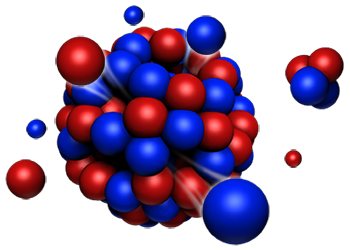Speaker
Description
The continuous wave spallation source SINQ has been in operation for 22 years. The proton beam power on target was gradually increased over the past decades and has now reached about 1.0MW. With one exception (the liquid metal target MEGAPIE) cannelloni-type solid state targets were used. These D2O cooled lead/Zr-based targets proved to be very reliable and underwent several design improvements over the past years in order to maximize the neutron yield. The strategy to run SINQ targets with solid state targets, which are periodically replaced every two years, appeared to be highly successful. This was demonstrated by a 96% annual availability of the facility averaged over the past 20 years.
However, in June 2016 an unexpected failure of target #11 occurred forcing us to replace it half a year before scheduled. The premature end of the target lifetime was caused by a sudden blockage of the cooling paths through the target. It should be emphasized that during the incident all inventory was contained safely inside the target, the primary cooling loop and its filters. No radioactivity was released from SINQ. A visual post irradiation examination (PIE) of the target in PSI's specially designated hot cell revealed extensive damage of many target rods and large amounts of molten lead blocking the interstices between the rods. Further extensive PIE was performed on some rods by using metallography, electron probe microanalysis (EPMA), gamma analyses etc. Results indicate strong irradiation-induced hardening. Together with the observed abundant presence of hydrides in the Zircaloy cladding tubes, this suggests strong embrittlement of the tubes.
Based on these findings, the design of the SINQ target was significantly altered. In addition, the capabilities to accurately monitor the proton beam position on the target and the temperatures within the target were enhanced. The newly designed target has been in operation since 2018.
This presentation will give an overview of the PIE of target #11 and the results obtained. It also tries to sketch a possible scenario how the incident took place. Furthermore, the improved target design will be presented and first operational experience with this target will be reported.

